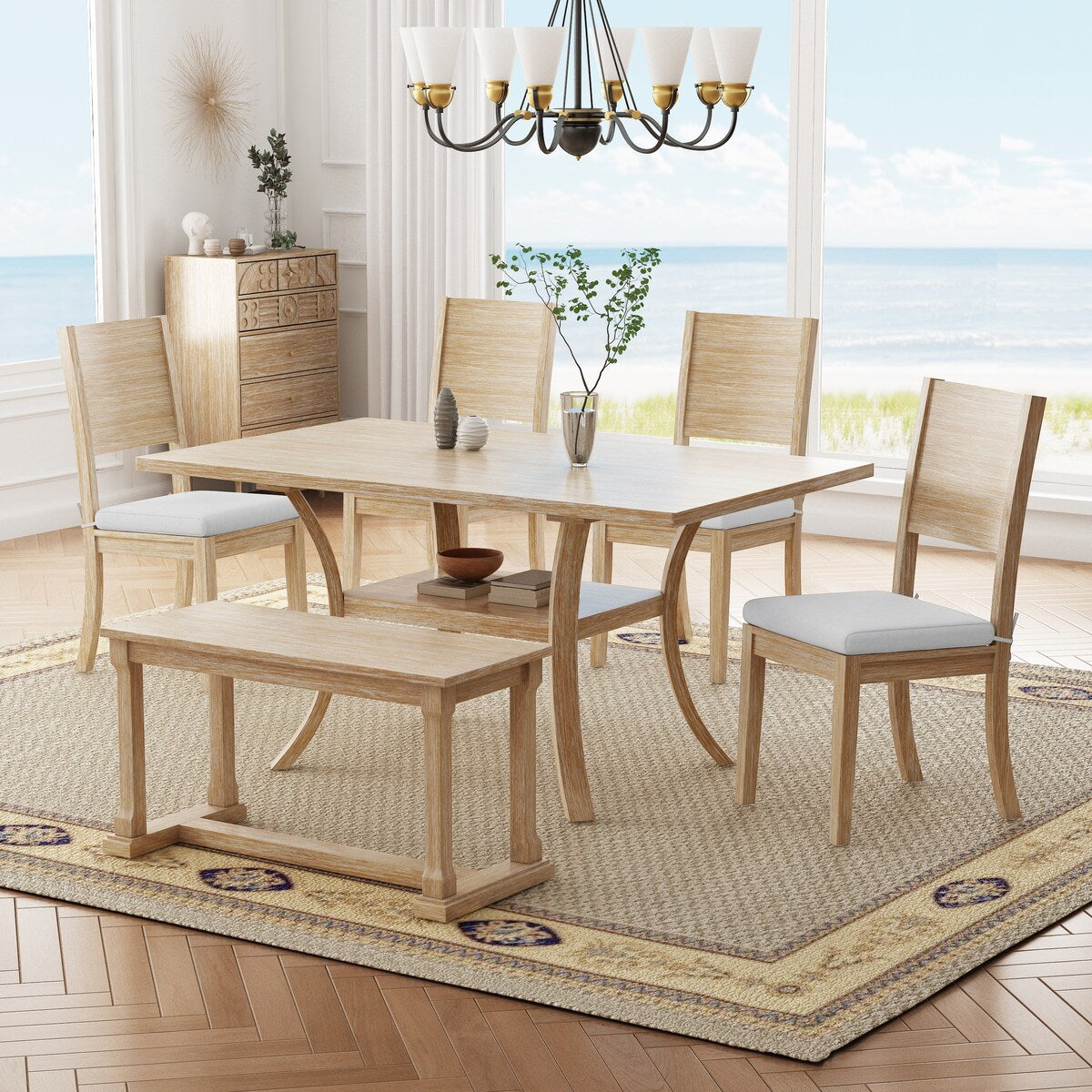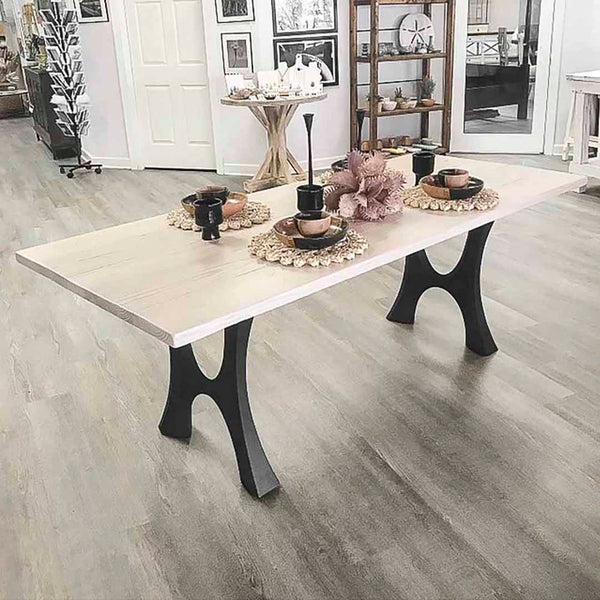From Standard to Modern: Discover the Ideal Dining-room Table Legs for Your Style
While classic styles such as cabriole and transformed legs evoke a sense of ageless refinement, contemporary styles like barrette and geometric alternatives offer an opportunity for striking visual rate of interest. As you take into consideration these aspects, the question stays: just how can you seamlessly integrate these diverse leg styles to produce an unified eating experience?
Comprehending Table Leg Styles
The range of eating space table leg styles can substantially affect both the aesthetics and functionality of the room. Each leg design adds one-of-a-kind functional functions and visual elements, dealing with varied layout choices and usage demands. Understanding these styles is crucial for selecting the appropriate eating table that lines up with your overall interior decoration vision.
For example, conical legs supply a clean, traditional look that can improve a space's beauty, while stand bases supply stability and make best use of legroom, making them excellent for smaller sized spaces. Barrette legs, a trademark of mid-century modern layout, present an industrial panache, enabling for an airy, open feeling. Trestle legs stimulate rustic appeal, providing durable support and a feeling of timelessness.
Wood legs can bring warmth and structure, whereas steel options commonly share a sleek, modern ambiance. Eventually, understanding table leg styles is vital for creating a natural eating location that reflects personal style while making certain practicality and comfort.
Standard Table Leg Options
When picking dining-room table legs, typical options typically personify classic elegance and craftsmanship. These designs show a rich heritage and a commitment to high quality, making them excellent for those that value classic aesthetic appeals.
Among one of the most famous typical leg designs is the cabriole leg, identified by its elegant bent form. This design typically features attractive makings and is most commonly found in Queen Anne and Chippendale furniture. One more preferred option is the turned leg, which flaunts a collection of smooth, rounded forms that supply a timeless appearance while preserving stability.
Additionally, the straight leg, while easy, provides a durable and unadorned framework that can mix effortlessly with a range of tabletop styles. For those attracted to ornate outlining, claw-and-ball feet legs stimulate a sense of magnificence and can act as a spectacular focal factor in any type of dining room.
Lastly, stand bases, although not purely legs, offer an alternative traditional alternative that permits sufficient legroom and can be beautifully carved. Each of these conventional leg styles adds to the general ambiance of an eating space, marrying feature with aesthetic allure.

Modern Table Leg Styles
Modern table leg designs supply a diverse series of styles that stress clean lines and cutting-edge materials. These my sources styles often focus on functionality while working as striking focal points within a dining room. Minimalist appearances are common, with legs crafted from products such as steel, glass, and crafted wood, which add to a ventilated and contemporary feel.
One prominent layout is the hairpin leg, defined by its slender, tapered framework that provides look at more info stability without frustrating the table top (dining room table legs). This style is typically located in mid-century modern furnishings and can easily complement different eating table forms. Another pattern is using geometric forms, where legs may handle unbalanced or angular forms, adding visual passion and a touch of virtuosity

Mixing Styles for Special Spaces
Frequently, homeowners seek to produce distinct dining spaces that mirror their individual style by mixing different design elements. This strategy enables the consolidation of varied aesthetics, causing an unified yet unique environment. Combining a rustic wooden table with streamlined, modern-day metal legs can create a captivating contrast that boosts the space's general allure.
Furthermore, integrating vintage table legs with modern tabletops can stimulate a feeling of history while maintaining a modern-day perceptiveness. Such combinations not only showcase specific taste i thought about this yet likewise urge imagination, enabling home owners to curate an area that really feels both personal and welcoming.
Color plays a critical role in this mixing procedure; choosing table legs that enhance or contrast with the existing color pattern can enhance aesthetic interest. Whitewashed legs can soften the daring of a dark table surface area, creating a balanced visual.
Tips for Choosing the Right Legs
Choosing the right table legs is important for attaining both functionality and aesthetic charm in your eating space. Begin by thinking about the total style of your space. Traditional settings gain from legs that include detailed carvings or turned styles, while modern spaces may require smooth, minimal styles.
Next, examine the elevation and stability of the legs. dining room table legs. Typical table range between 28 to 30 inches in height, so make sure the legs enhance this dimension for comfort. Furthermore, durable products, such as wood or steel, can boost security and longevity
Review the leg shape as well-- options include straight, tapered, or pedestal styles. Straight legs use a traditional appearance, while conical legs can include a touch of sophistication. Pedestal bases offer enough legroom and are ideal for smaller rooms.
Verdict
In recap, choosing the suitable dining area table legs calls for careful factor to consider of both traditional and modern styles. By integrating leg style, height, and material with the general decoration, a cohesive and inviting atmosphere can be attained.
The variety of eating space table leg styles can dramatically influence both the visual appeals and capability of the area. Inevitably, comprehending table leg designs is vital for developing a cohesive eating area that mirrors personal design while guaranteeing practicality and comfort.One of the most iconic traditional leg designs is the cabriole leg, characterized by its graceful curved shape. Straight legs offer a timeless appearance, while conical legs can include a touch of elegance.In recap, choosing the ideal dining space table legs calls for careful factor to consider of both standard and modern-day designs.